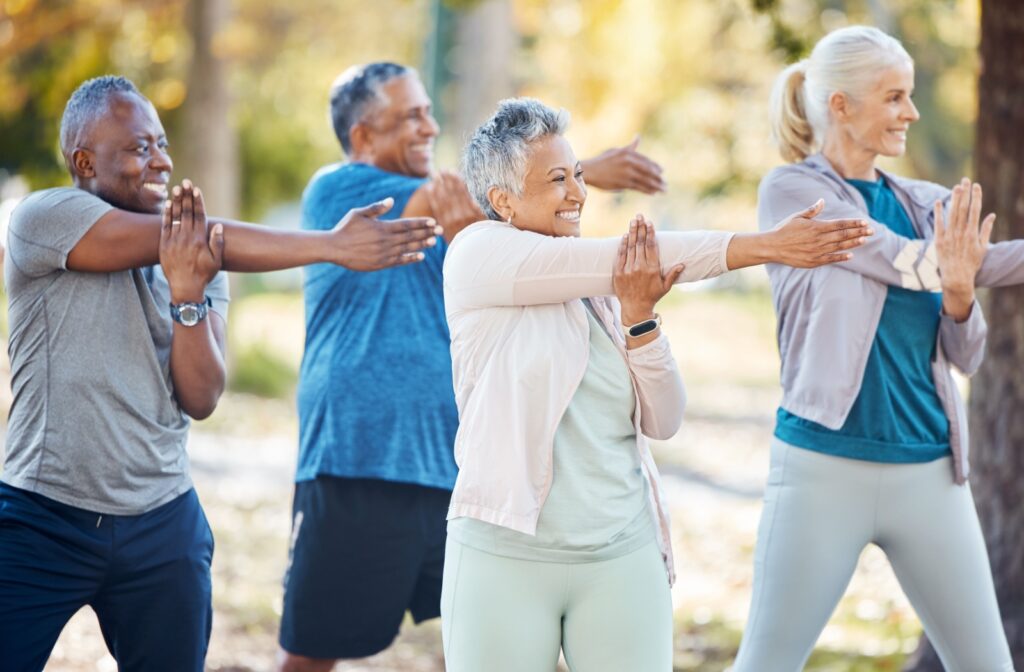Physical activity is essential for everyone, but it holds a special significance for seniors. In fact, regular exercise offers much more than appearance or muscle mass—it helps seniors build the ability to stay upright, safe, and healthy in an engaging life. So how much physical activity do seniors need, and how can they safely achieve it?
Seniors should aim for at least 150 minutes of low-intensity exercise every week, and work in muscle-strengthening and balance exercises where possible. This can easily be broken into small periods every day that let seniors reap the benefits of exercise—without putting themselves at risk.
Why Staying Active Matters
For many seniors, regular exercise plays an important part in their everyday health. It helps them maintain mobility, independence, balance, and more. Staying fit is also known to manage chronic conditions like arthritis, lower the risk of heart disease, and help keep a person’s weight in check. These all directly impact a person’s quality of life.
That’s why seniors should make a point of working regular exercise into their daily routine. You don’t need to do much; the CDC recommends that seniors aim for:
- At least 150 minutes of low-to-moderate-intensity exercise every week, or 75 minutes of high-intensity exercise
- At least 2 sessions of muscle-strengthening exercises per week
- Regular balance exercises several times per week
Though, at first, these numbers might seem difficult to work into a schedule, they can easily be broken down into smaller sessions. You can perform 30-minute sessions a few times per week, or divide them into even smaller periods if needed. So how can you achieve these goals, and what exercises should you try?
Low-Intensity Senior-Safe Exercises
You should always start small when changing up your exercise routine. Trying to start anything too serious—especially if you’ve been living a sedentary lifestyle—can easily lead to strained muscles, stiff joints, and even pain if you aren’t careful.
Instead, try to perform low or moderate-intensity exercises to begin building up your strength. These can be simple, so try to start by:
- Walking around your community more often
- Swimming a few times a week
- Cycling, either indoors or outdoors
- Gardening
- Taking up dancing or water aerobics for a gentle, pleasant activity
These all raise the heart rate and improve your cardiovascular health. Meanwhile, they also help you build muscle to work towards more intensive exercises. Though they may not seem like it at first, low-intensity exercises can make a large difference to your overall health.
High-Intensity Senior-Safe Exercises
Once you’re comfortable with low-intensity exercises, try to gradually work in more challenging activities to begin building and strengthening muscles. High-intensity exercises can safely be performed by seniors of almost any age, but it’s essential that you practice proper care.
Some high-intensity exercises for seniors include:
- Interval walking, where you increase and decrease your pace to simulate jogging
- Bicycling with resistance, either on a stationary bike or outdoors
- Bodyweight exercises like push-ups, lunges, and squats
Remember to always start slow and don’t push yourself too hard. Take things at your own pace; fitness is a journey! If you ever notice significant discomfort, slow down and adjust your exercise. Once you feel comfortable, you can also use weights or resistance bands to challenge yourself further; this helps you build more muscle over time.
Before beginning any serious high-intensity exercises, it helps to speak with a medical professional. They can give you advice on safe exercises that will help you achieve your goals—without putting your body at risk.
Balance Exercises For Seniors
As we age, our balance naturally declines. This is because of decreases in muscle mass and strength—which can be corrected with regular exercise.
Balance exercises are essential for all seniors because they help build lower body strength and reduce the risk of falling. Some simple exercises you could try include:
- Standing on one foot and holding for a few seconds, then switching to the other
- Walking heel-to-toe in a straight line across your living room
- Rising from sitting without using your hands or arms
- Yoga or Tai Chi
These exercises may seem simple, but they make a bigger difference than you might think. Soon, you’ll find that your sense of balance has greatly improved, and you’ll be at a much lower risk of falling or experiencing other injuries.
Living a Safe & Healthy Lifestyle
Maintaining an active lifestyle is easier than you might think. You can work these activities into your everyday routine, and quickly notice how much of a difference they can make!
Here at The Villages of Murfreesboro, we believe in supporting our residents in everything they do. And with our on-site fitness room, it’s easier than ever to stay healthy with physical exercise. Book a tour with our community today, and take your first step toward a safer, healthier lifestyle.




